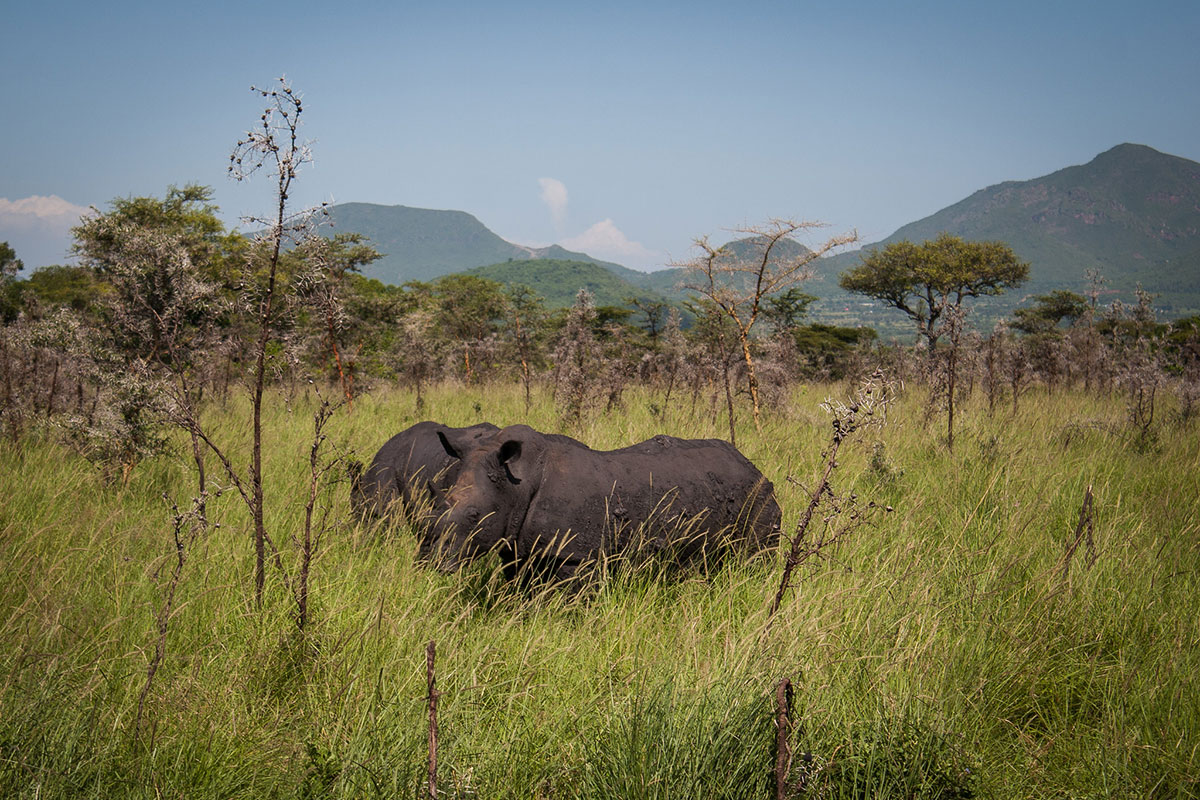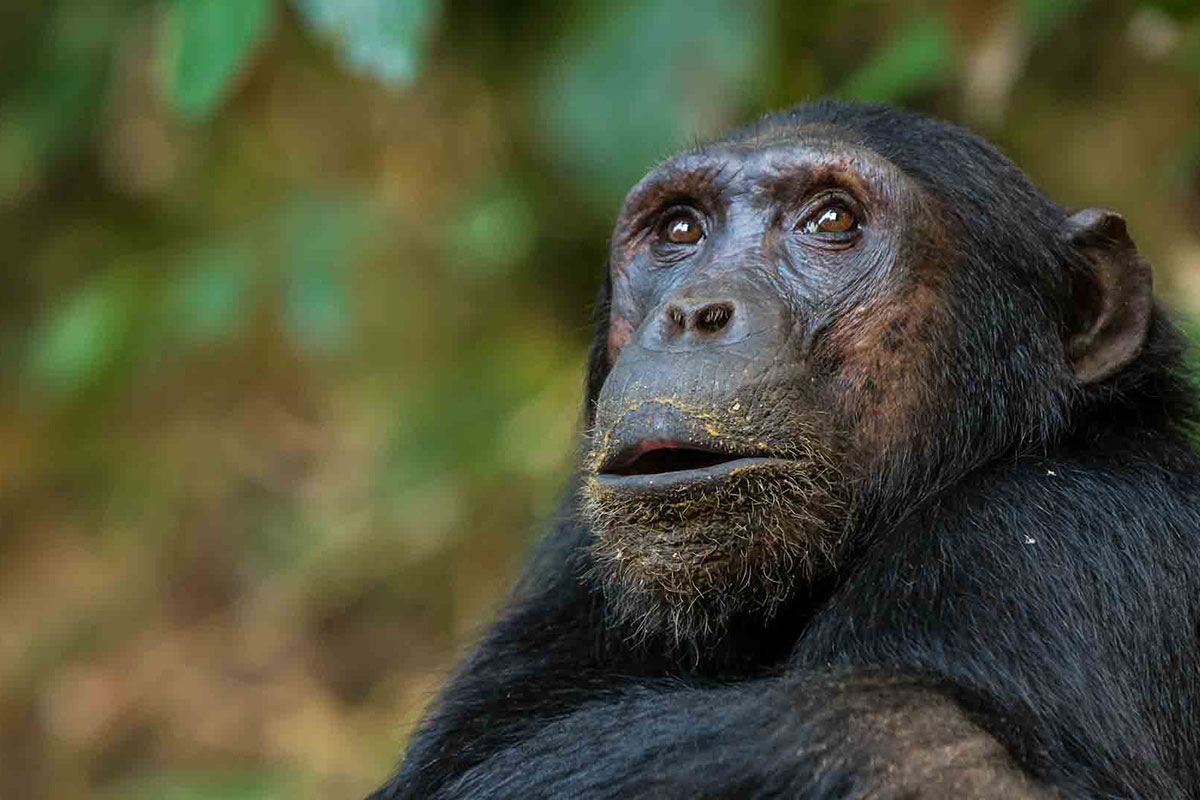
Things to Do in Ruma National Park
January 13, 2025
Chimpanzees in Gishwati-Mukura National Park
January 13, 2025Golden Monkeys in Gishwati-Mukura National Park
Gishwati-Mukura National Park is a prime destination for trekking Golden Monkeys, offering year-round opportunities to observe these rare and playful primates. However, the best time to spot Golden Monkeys is during the rainy months, from October to May. During this period, food is abundant, which means the monkeys don’t need to travel far, making it easier to track and view them. Keep in mind that the forest trails can be slippery and challenging to navigate during the rains.
For those who prefer easier trekking conditions, the dry months from June to September are ideal. The trails are drier, and the vegetation is less dense, making the hike more manageable. While food is less abundant for the Golden Monkeys during this period, sightings are still highly likely.
Golden Monkey Trekking Experience
Golden Monkey tracking is the highlight of a visit to Gishwati-Mukura National Park. The adventure begins in the morning with a detailed briefing from the park rangers about the trekking guidelines and safety measures. Accompanied by an experienced guide, you’ll venture into the lush forest to locate the Golden Monkeys.
Once you find them, you’ll have a magical one-hour encounter, watching their playful antics, foraging habits, and social interactions. Along the way, you might also encounter other primates, such as:
- Chimpanzees
- Blue Monkeys
- L’Hoest’s Monkeys
- Baboons
Additionally, the park is home to other wildlife, including duikers, a variety of birds, and smaller forest creatures, making every trek an unforgettable experience.
About Gishwati-Mukura National Park
Gishwati-Mukura National Park is Rwanda’s newest and smallest national park, spanning just 34 square kilometers. Established in 2015, the park was created by merging Gishwati Forest and Mukura Forest. Located on the ridge that separates the Congo and Nile water catchment areas, the park is part of the biodiverse Albertine Rift.
Despite its small size, the park boasts incredible biodiversity, including:
- Primates: Golden Monkeys, Eastern Chimpanzees, L’Hoest’s Monkeys, and Blue Monkeys.
- Birds: Over 232 species, including Albertine Rift endemics.
- Tree Species: A mix of indigenous trees and newly introduced species like eucalyptus and hagenia.
Before its gazettement, the area faced significant degradation due to resettlement, livestock farming, and illegal mining. Conservation efforts since 2015 have helped restore the ecosystem, benefiting both wildlife and the local communities.
Other Activities in Gishwati-Mukura National Park
Guided Nature Walks
Explore the park’s beauty on a guided nature walk along well-established trails. You’ll experience the forest’s vibrant ecosystem up close, encountering:
- Butterflies, chameleons, and insects.
- Over 60 species of trees, including bamboo, mahogany, orchids, and ferns.
- Newly introduced tree species such as eucalyptus, dombeya torrida, and hagenia abyssinica.
These walks are a great way to immerse yourself in the park’s flora and fauna while enjoying the serene environment.
Primate Tracking in Gishwati-Mukura National Park
Primate tracking is one of the most exciting activities in Gishwati-Mukura National Park. This guided adventure gives you a chance to see a variety of primates, including chimpanzees, blue monkeys, L’Hoest’s monkeys, and baboons.
The experience begins in the morning with a detailed briefing by park rangers on the dos and don’ts of primate tracking. From there, you’ll embark on a guided trek through the forest, led by an experienced ranger who will help you spot the park’s diverse wildlife. Along the way, you may also encounter duikers, a variety of bird species, and other fascinating forest creatures.
Bird Watching in Gishwati-Mukura National Park
If you’re a bird enthusiast, Gishwati-Mukura National Park is a haven for birdwatching. The park is home to over 232 bird species, including 15 species that are endemic to the Albertine Rift. Some of the notable birds you can spot include:
- Grey Crowned Crane
- Martial Eagle
- Mountain Yellow Warblers
- Purple-breasted Sunbird
- Regal Sunbird
- Ruwenzori Batis
- Ruwenzori Turaco
- Stripe-breasted Tit
Whether you’re a seasoned birder or a beginner, the park’s rich birdlife and serene environment offer a fantastic birding experience.
Hike to the Kazeneza Waterfall
One of the most rewarding hikes in Gishwati-Mukura National Park is the trail to Kazeneza Waterfall, located in the heart of the park. This hike not only offers stunning views of the surrounding forest but also leads to a breathtaking waterfall, perfect for sightseeing and photography. It’s a great way to combine adventure with the natural beauty of the park.
Biking and Cycling Along the Congo Nile Trail
The Congo Nile Trail offers one of the most incredible biking experiences in East Africa. This scenic route takes you along the shores of Lake Kivu and through the lush Nyungwe Forest, providing a unique way to explore Rwanda’s landscapes. Whether you’re a professional cyclist or a casual biker, the trail offers a memorable adventure.
Community-Based Activities
Engaging in community-based activities around Gishwati-Mukura National Park allows you to connect with local culture and traditions. Some of the experiences include:
- Farm stays for an authentic rural experience.
- Live cultural dances performed by local communities.
- Handicraft workshops, where you can learn how to make traditional crafts.
- Beekeeping tours to understand local honey production.
- Tea plantation tours for insight into Rwanda’s tea-growing process.
- A chance to learn from traditional healers who use medicinal plants in their practice.
These activities offer a deeper appreciation of how local communities coexist with nature and thrive alongside the wildlife.
How to Access Gishwati-Mukura National Park
The park is easily accessible from Rwanda’s capital, Kigali, with a 2-hour drive by road. For those who prefer flying, a chartered flight from Kigali to the park is also available.
Additionally, Gishwati-Mukura National Park can be accessed from Uganda’s Bwindi Impenetrable National Park and Mgahinga Gorilla National Park, making it possible to combine your visit with gorilla trekking in Uganda.
Where to Stay in Gishwati-Mukura National Park
Although Gishwati-Mukura is a relatively new park, the luxurious Gishwati Lodge is the top choice for accommodation. This exclusive lodge features six luxury chalets that accommodate fewer than 15 guests, ensuring a personalized and tranquil experience.
We recommend booking your stay at least a month in advance to secure your spot.
Alternatively, you can stay in Kivu, Rubavu, or near Volcanoes National Park, all within a 30-minute drive of Gishwati-Mukura.
Why Book Your Trip with Excursia Adventures
At Excursia Adventures, we take pride in offering seamless and personalized travel experiences. Our professional team, both in the office and the field, is dedicated to meeting your needs and ensuring you have the most memorable adventure.
We’re highly rated on TripAdvisor and SafariBookings, and our website provides up-to-date, reliable information to help you plan your trek. As a locally owned company run by Ugandans, we have an in-depth understanding of Rwanda and its parks, allowing us to create unique and authentic travel experiences.
Start planning your trip to Gishwati-Mukura National Park today and discover the beauty of Rwanda with Excursia Adventures!




